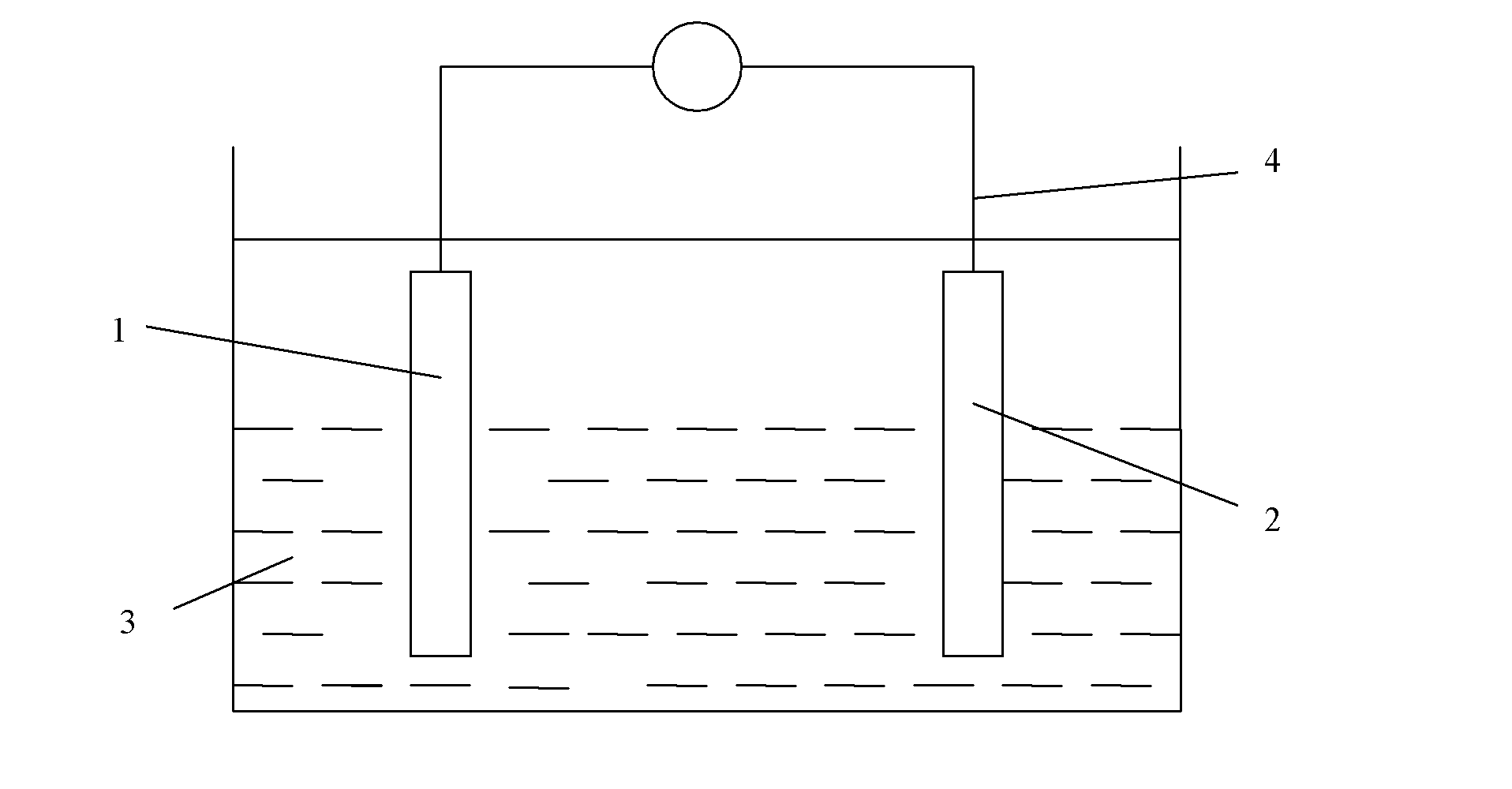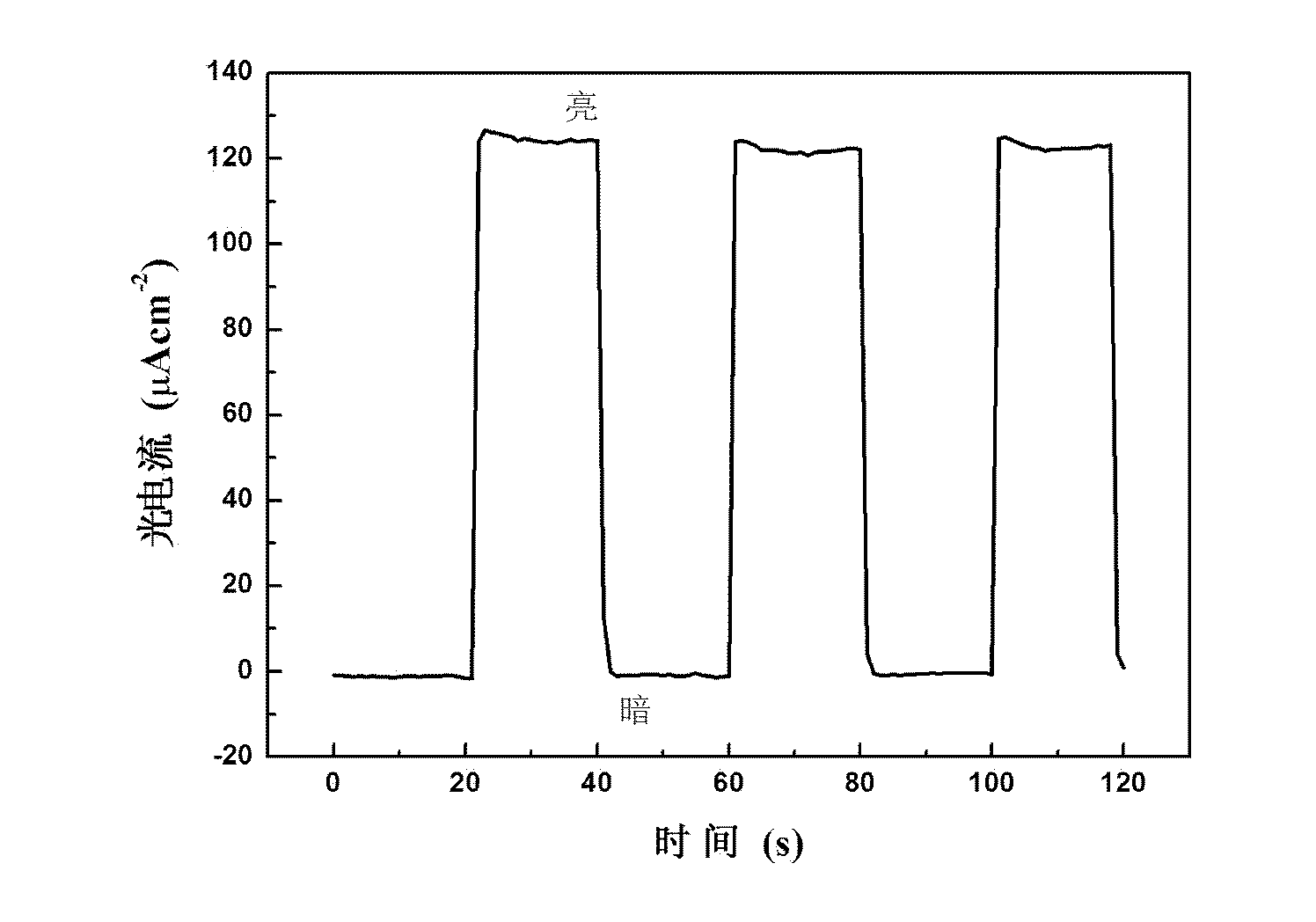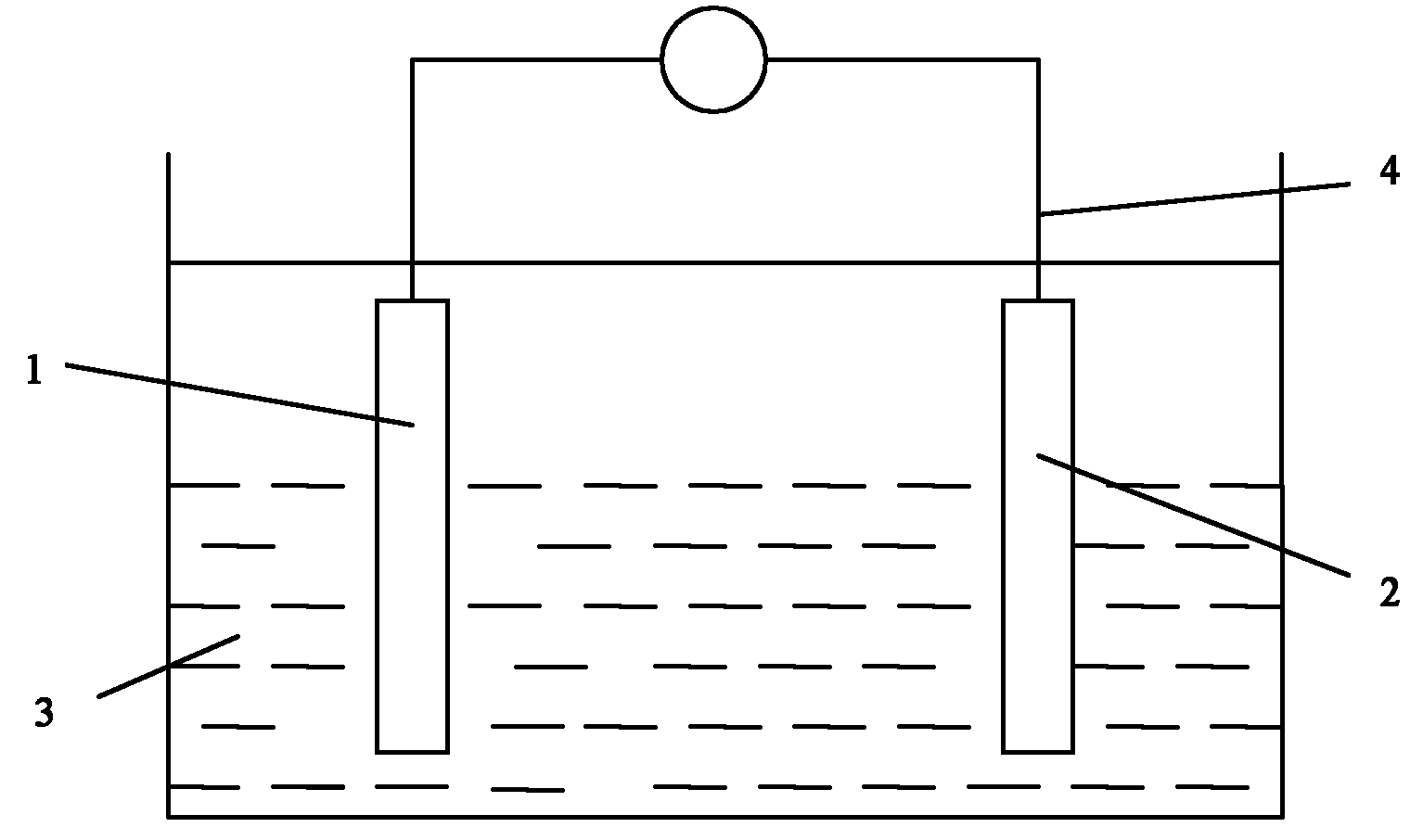A self-biased photoelectrochemical cell for solar hydrogen production
A photoelectrochemical battery and self-bias technology, which is applied in the direction of electrical components, can solve the problem of reducing attractiveness, and achieve cost saving, good application prospects, and simple battery structure.
- Summary
- Abstract
- Description
- Claims
- Application Information
AI Technical Summary
Problems solved by technology
Method used
Image
Examples
Embodiment 1
[0025] A self-biased photoelectrochemical cell for hydrogen production by solar energy is mainly composed of a photoanode 1 with photoelectric response capability, a photocathode 2 with photoelectric response capability, an electrolyte 3 and an external circuit 4 . The photocathode 2 with photoelectric responsiveness is made of p-type gallium phosphide; the photoanode 1 with photoelectric responsiveness is made of n-type silicon; the electrolyte 3 is made of acidic aqueous solution. The external circuit 4 is a conductive path formed by connecting the photoanode 1 with photoelectric response capability and the photocathode 2 with photoelectric response capability with wires.
[0026] The connection relationship of the battery is that the n-type silicon and p-type gallium phosphide are partially immersed in the acidic aqueous solution, and the non-immersed part is connected by a wire to form a conductive path.
[0027] The working process of the battery is that when sunlight irr...
Embodiment 2
[0029] A self-biased photoelectrochemical cell for hydrogen production by solar energy is mainly composed of a photoanode 1 with photoelectric response capability, a photocathode 2 with photoelectric response capability, an electrolyte 3 and an external circuit 4 . The photocathode 2 with photoelectric responsiveness is made of p-type copper indium selenide; the photoanode 1 with photoelectric responsiveness is made of n-type zinc oxide; the electrolyte 3 is made of aqueous solution. The external circuit 4 is a conductive path formed by directly connecting the photoanode 1 with photoelectric response capability and the photocathode 2 with photoelectric response capability.
[0030] The connection relationship of the battery is that part of the n-type zinc oxide and p-type copper indium selenium is immersed in the aqueous solution, and the non-immersed part connects the n-type zinc oxide and the p-type copper indium selenium to form a conductive path.
[0031] The working proce...
Embodiment 3
[0033] A self-biased photoelectrochemical cell for hydrogen production by solar energy is mainly composed of a photoanode 1 with photoelectric response capability, a photocathode 2 with photoelectric response capability, an electrolyte 3 and an external circuit 4 . The material selected for the photocathode 2 with photoelectric response capability is p-type cuprous oxide; the material selected for the photoanode 1 with photoelectric response capability is n-type iron oxide; the material selected for the electrolyte 3 is alkaline aqueous solution. The external circuit 4 is a conductive path formed by connecting the photoanode 1 with photoelectric response capability and the photocathode 2 with photoelectric response capability to the load with wires
[0034] The connection relationship of the battery is that the n-type iron oxide and p-type cuprous oxide are partly immersed in the acidic aqueous solution, and the non-immersed part is connected by a wire to connect the n-type ir...
PUM
| Property | Measurement | Unit |
|---|---|---|
| current density | aaaaa | aaaaa |
| current density | aaaaa | aaaaa |
| current density | aaaaa | aaaaa |
Abstract
Description
Claims
Application Information
 Login to View More
Login to View More - R&D
- Intellectual Property
- Life Sciences
- Materials
- Tech Scout
- Unparalleled Data Quality
- Higher Quality Content
- 60% Fewer Hallucinations
Browse by: Latest US Patents, China's latest patents, Technical Efficacy Thesaurus, Application Domain, Technology Topic, Popular Technical Reports.
© 2025 PatSnap. All rights reserved.Legal|Privacy policy|Modern Slavery Act Transparency Statement|Sitemap|About US| Contact US: help@patsnap.com



